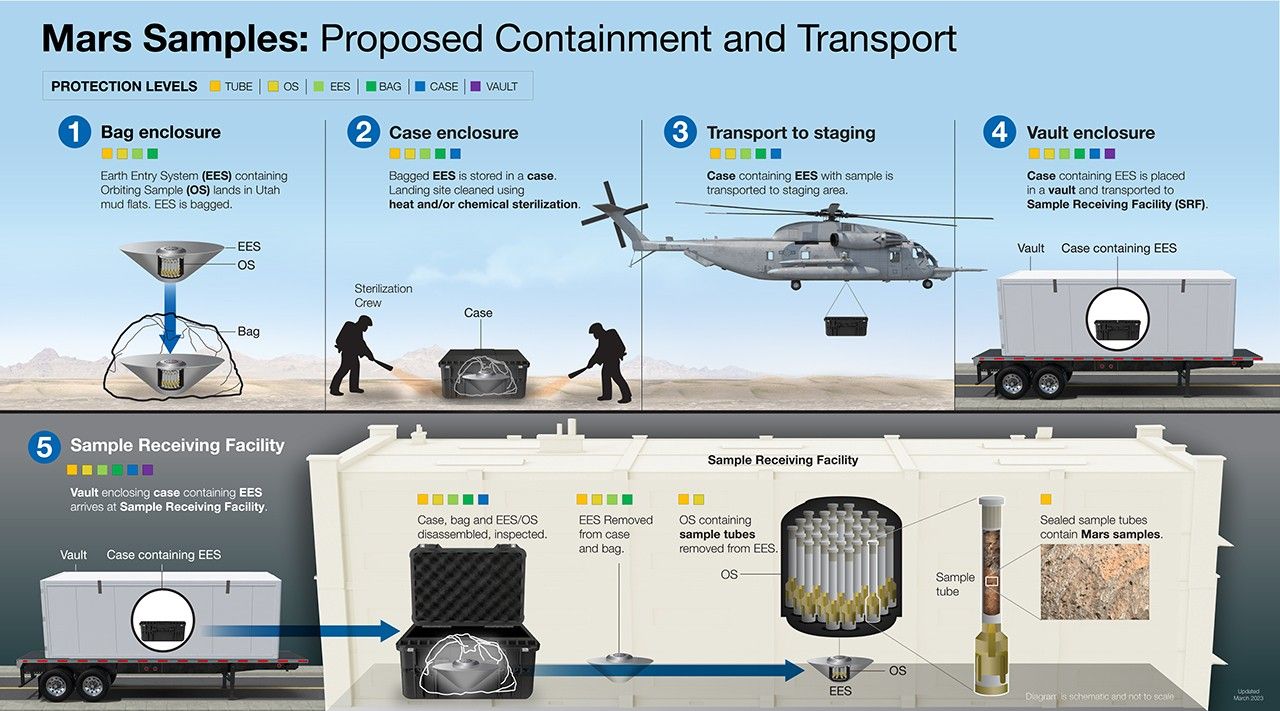Mars Samples: Proposed Containment and Transport
| Credit | NASA/JPL-Caltech |
|---|---|
| Language |
|
This illustration shows the proposed process for safely recovering, containing, and transporting Mars samples gathered by NASA's Perseverance Mars rover after they are returned to Earth as part of the joint NASA/ESA (European Space Agency) Mars Sample Return Campaign.
The process of carefully containing and handling the samples would begin long before they arrive on Earth. Every phase of the Mars Sample Return campaign from collection and sealing to launch, transfer, and landing has been developed with a “safety first” approach. Sample handling and curation experts would be involved in planning for the round trip at each phase of the campaign.
After its journey back to Earth from Mars on the ESA-provided Earth Return Orbiter, the capsule containing the samples would land at the Utah Test and Training Range in west-central Utah. NASA would securely transport the capsule and its contents to a Sample Return Facility at a location to be determined. Once at the facility, the samples would undergo a rigorous process to assess whether they are safe for release for detailed analysis by scientists from around the world.
The multi-mission Mars Sample Return program is being planned by NASA and ESA. After the samples return to Earth, they would be transferred to NASA’s Sample Receiving Project led by the Johnson Space Center in Houston, Texas. The Sample Receiving Project, a joint NASA/ESA initiative, is managed by NASA’s Mars Exploration Program. The Mars Exploration Program is managed at the Jet Propulsion Laboratory in Southern California.
For more information, visit: mars.nasa.gov.




























